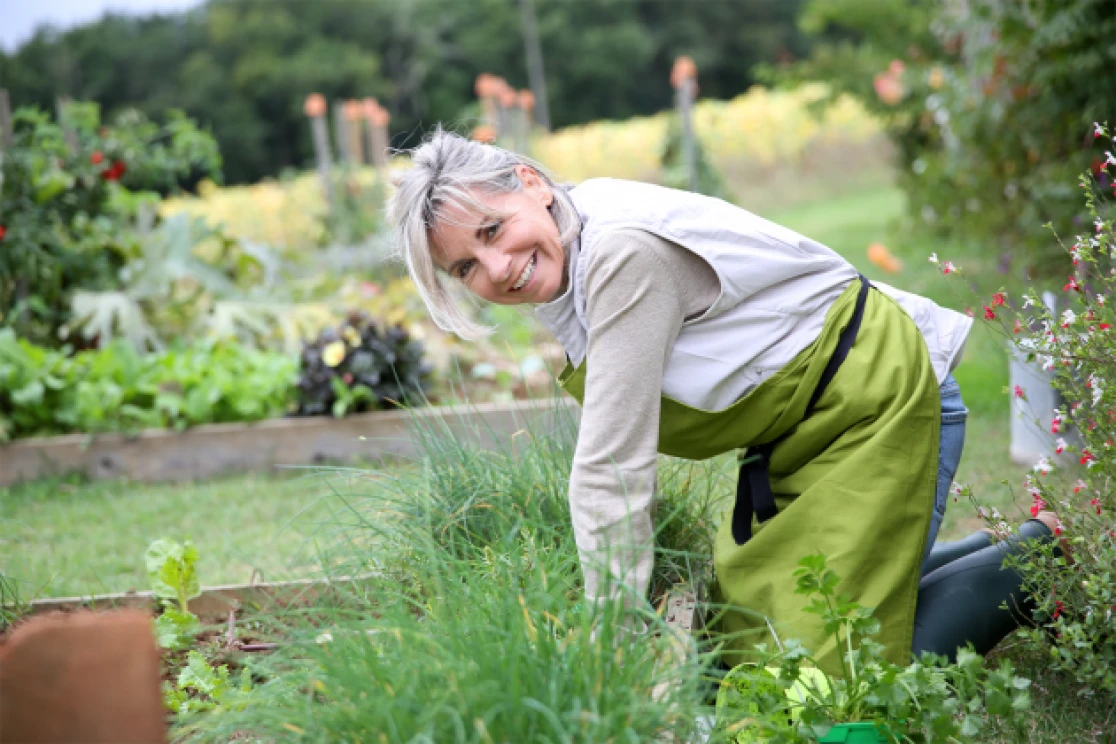
Hurt Less, Garden More: Tips for healthy gardening
 Warm weather and sunny days are here, and for many people, that means spending time in the garden. Gardening provides many benefits, including exercise and relaxation. Yet it can also be difficult for those with arthritis and can increase joint pain and muscle aches for anyone if done too strenuously or with incorrect body mechanics. But, you don’t have to be a sore gardener! Here are a few tips to make your spring and summer gardening easier and healthier on your joints:
Warm weather and sunny days are here, and for many people, that means spending time in the garden. Gardening provides many benefits, including exercise and relaxation. Yet it can also be difficult for those with arthritis and can increase joint pain and muscle aches for anyone if done too strenuously or with incorrect body mechanics. But, you don’t have to be a sore gardener! Here are a few tips to make your spring and summer gardening easier and healthier on your joints:
- Warm up – Before gardening, take a short walk in your yard to warm up knees and hips, circle your arms/wrists, roll your shoulders, open and close your fingers, and gently look up /down 10 times to extend your neck and back. This will increase blood flow to your joints and help to reduce joint fatigue
- Plan ahead – Break gardening tasks down into smaller increments vs. “whole day” jobs. A good rule of ergonomic gardening is to take breaks every 20 minutes, especially when pruning or digging. This allows your hand joints to recover properly and will help to reduce fatigue. Consider reducing your garden size or working on small areas over several days. Change position often when gardening to reduce stiffness.
- Keep it close – Avoid stretching too far with arms forward when hedge trimming or lifting plants. This position puts a lot of strain on your back and forearm muscles and can contribute to “tennis elbow.” Get as close to your work area as possible. Carry items with the palm up which takes stress off your outer elbow where tendinitis most commonly occurs.
- Protect your back – Always bend at your knees and keep your back straight when lifting items. Never bend over at the waist to lift plants or heavy items like soil or mulch. Divide larger bags of fertilizers or soil additives into smaller increments, or use a 2-wheeled garden cart to carry heavy items long distances. Garden carts are easier and more stable to use than standard wheelbarrows.
- Reduce grip force on gardening tools – Add foam insulation tubing around grip handles for trowels/pruners (available at Home Depot/Lowes) to cushion tools and widen grip. Many companies also now make ergonomic gardening tools that can be found online. These tools have padded or “neutral wrist” handles which use a thumb up position for reduced strain when gripping and improve leverage. There are also several weeding and trimming tools which use an extended handle so that you do not have to bend over to pull those pesky weeds or do edging work. Consider using padded “workout” gloves which leave your fingers free for gripping and reduce grip force on handles when digging, shoveling or mowing.
- Maintain tools – Always make sure your tools are in top shape for the task. A little mineral oil can improve the efficiency of pruner blades and trowel edges. If blades are dull, invest in new pruning shears. It will be worth the pain savings to your hands.
- Update your “gardening gear” – Use newer lightweight fabric coil hoses, foam kneelers to protect your knees, and more ergonomic tools for pruning and digging which are now more easily available online or in gardening stores.
Applying some of these principles will help you enjoy gardening better this season, and grow more with less pain! The physicians and therapists at MMI are always available to help should you have specific joint pain that does not resolve or if you are interested in learning about treatment alternatives. Happy gardening!